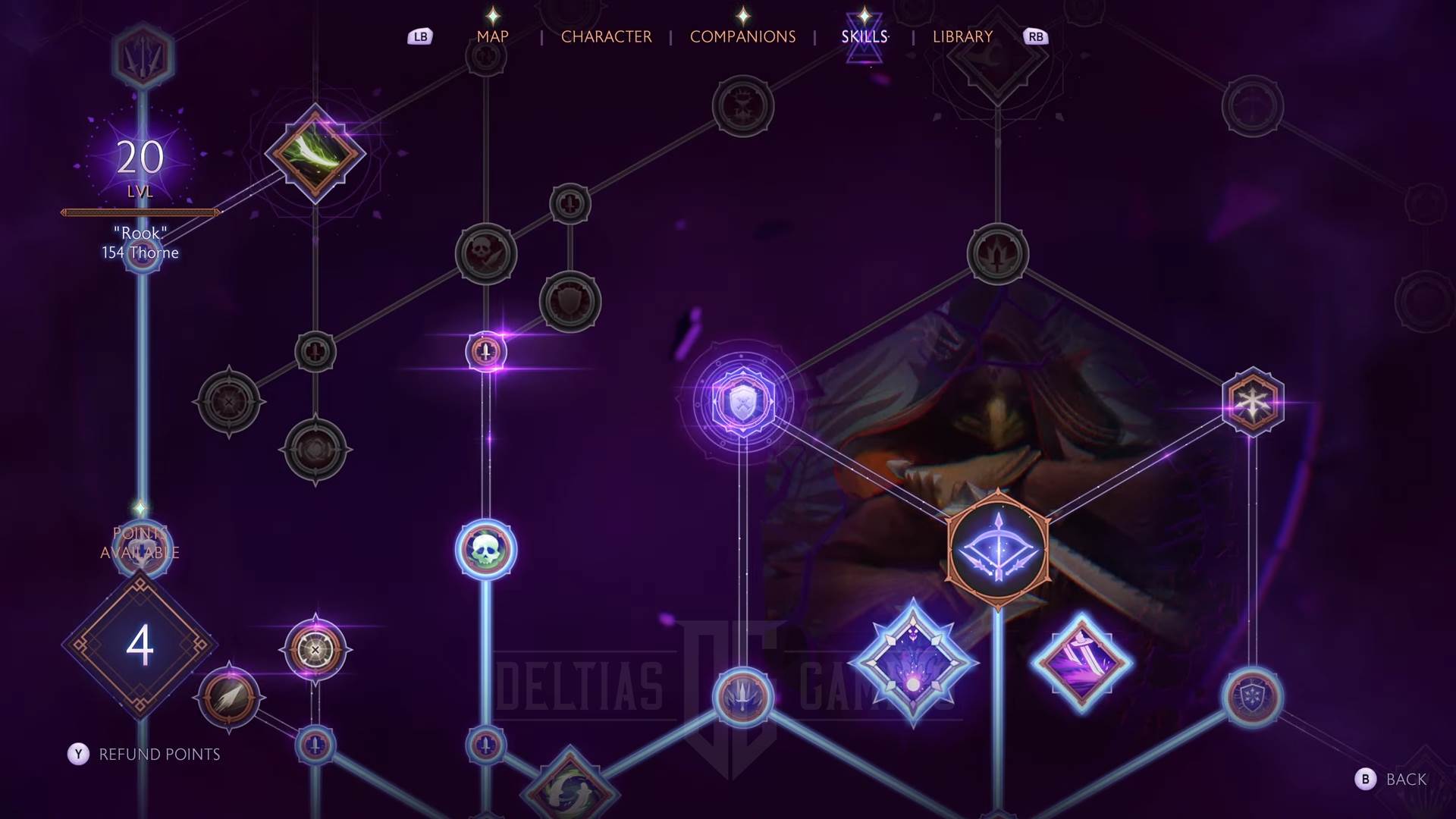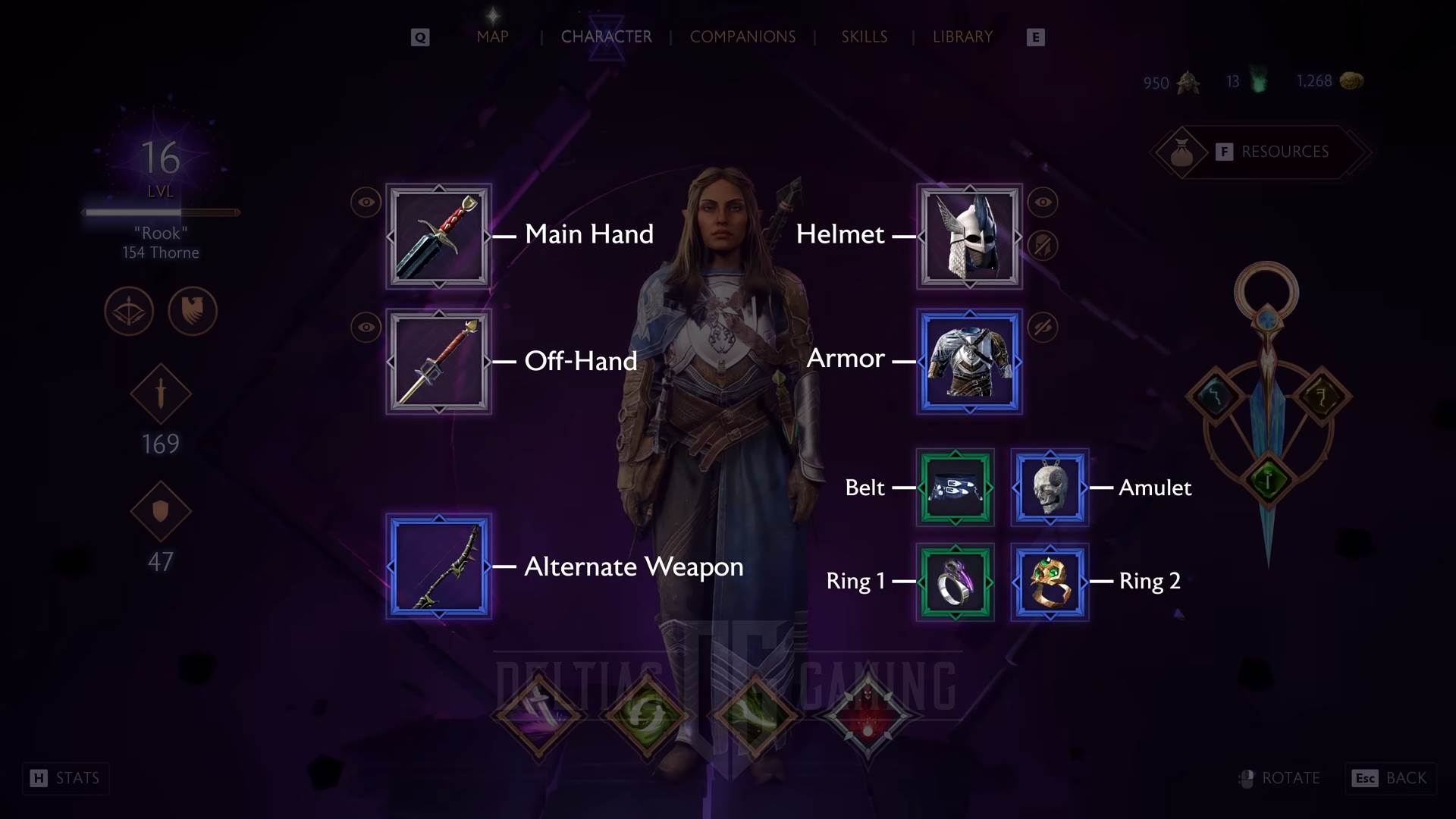Dragon Age: The Veilguard revealed several progression systems players can use to make powerful, unique builds for Rook and their companions.

Dragon Age: The Veilguard is an upcoming action RPG being developed by BioWare. The game is set 10 years after the events of Dragon Age: Inquisition and is Inquisition’s direct sequel. As an action RPG, the game is full of various progression systems to help build up the player character, known as Rook. While things like class matter to the overall direction of how the character will play, the specialization that these progression systems will have will allow for a lot of customization. This of course will allow for multiple and different feeling builds to be created even within the same class.
Skill Tree Progression System
The skill Dragon Age: The Veilguard tree progression system uses a honeycomb pattern where players use skill points to advance on paths and unlock new skills and specializations. In Dragon Age: The Veilguard, you create unique playstyles that can master and tune to deliver the perfect combination of attacks for the desired effect. The first aspect of this build crafting comes from the Skill Tree progression system. At level 50, Rook can get a total of 50 skill points (the first one is technically used automatically to unlock your class). Rook levels up by gaining experience points gained from quest, exploring the world, and defeating enemies. Bioware notes that completing a quest gives the largest experience gains.

Skill Tree Nodes
Every time Rook levels up, they can place one of these skill points into a node of the Skill Tree. These nodes do many things from granting Rook a new, powerful ability to a small but important passive boost to stats. The various types of nodes and what they do are denoted by their shape:
- Large Circle – Class: These are class-specific skills, such as core skills and weapon proficiencies
- Diamonds – Ability: These are Abilities that can be assigned for use in an Ability slot
- Medium Circle – Major Passives/Ability Upgrades: They improve on existing Abilities or Stats such as giving it a new effect or improving range.
- Small Hexagon – Traits: These modify existing class skills.
- Small Circle – Minor Passives/Stat Boost: These increase the efficacy of various other Abilities or stats in minor ways.
Nodes are designed to work off of each other to make cohesive builds and strategies. And if you ever want to change your build, Skill Points can be refunded at any time, with no cost.
Specializations also have skill nodes on the skill tree and are unlocked at level 20. These specializations are themed by faction, but Rook’s faction does not limit their choice in specialization. An example given by Bioware is that a Grey Warden Rook can still take the Veil Ranger Specialization if they are a Rogue.
Item Progression System
Items will also have their progression system both for themselves and how they interact with Rook. Items are acquired either through purchasing from merchants or can be found in the environment. Merchants will sell more and better items the higher your rank with them is based on their faction.

Rook can equip up to nine items:
- Main Hand
- Off-Hand
- Alternate Weapon
- Helmet
- Armor
- Belt
- Amulet
- Ring 1
- Ring 2
Every item comes with stats, properties, and rarities, which range from Uncommon to Legendary. You can improve items in various ways, including taking them to the Caretaker, a mysterious entity residing in the Lighthouse. The Caretaker upgrades items based on the level of the workshop, which ranges from 0 to 10. You can raise the workshop’s rank by finding mementos during Rook’s adventures.

Upgrading Items in Dragon Age: The Veilguard
Upgrading items boosts their stats and allows them to reach the current level of the Caretaker’s workshop. As your rank increases, you’ll unlock new enchantments that can be applied to items or abilities. Moreover, these enchantments enhance performance, like increasing Stagger or boosting critical damage. You can also upgrade and enchant companion items the same way. Keep in mind, your workshop rank affects all future items you discover. For instance, if you raise your workshop to level 3, all items you find or purchase will automatically be level 3.
Items are upgraded by purchasing duplicates. When you purchase a duplicate item, the level of you existing item will level up to match your current workshop level. The item will also be empowered, which unlocks a new property and improves the stats of the item. This increases the rarity as well, for example going from Rare to Epic. Keep a look out for duplicates and continue to upgrade your Caretaker’s workshop level to improve your items.

The last item type to worry about is Runes. Rook can slot 3 runes at a time. Each rune grants an active and a passive benefit. These passive benefits always apply but the active ones require some form of activation to get their effect.
Companion Progression System
Every companion in Dragon Age: the Veilguard has their own skill tree and unique items. Unlike Rook can equip nine different items, companions can only equip 4 items. Rook upgrades and enchants his companion’s items just like his own. You must visit the Caretaker’s workshop to do this just like with Rook’s gear.

Companion skill trees work similarly to Rooks. Pay attention when choosing a companion’s skill as they can be a boon to your own build. You can use them to compliment your build by providing primers or detonators to work alongside your own. Conversely, you can use them to supplement weaknesses in your own build, such as bringing a different kind of damage than your own.
Overall, companion progression works very similarly to Rook’s own progression, just slightly simplified. Choosing and upgrading the right companion for the job is still very important to Rook’s success on their adventures.
How Progression Could Work in Dragon Age: The Veilguard
The progression systems and build crafting in Dragon-Age the Veilguard look to be some of the more interesting in action RPGs. With the emphasis in combat on priming and detonating, knowing what build Rook and his companions have and how to improve on them is very important. Equipping items that improve the right damage types while also making sure they provide the right debuffs for stacking seems complicated but rewarding. You can look into all of these fun and interesting ways to improve on Rook here at Bioware’s website.
FAQs About Dragon Age: The Veilguard Progression Systems
Q1: How many levels can character progress through in Dragon Age: The Veilguard
Answer: Currently, there is a max level of 50 in the base game of Dragon Age: The Veilguard. Furthermore, with each level advancement you will earn skill points, which you can use to unlock new abilities, traits, and passives in the skill tree system.
Q2: What are the different progression systems in Dragon Age: The Veilguard?
Answer: In Dragon Age: The Veilguard you can progress your character through leveling, earning skill points, and unlocking abilities on the skill tree. Additionally, you can also progress your weapons, armor, and accessories with an upgrade system at the Caretaker’s workshop. Finally, you can also upgrade your companions and their equipment using the same systems.
Looking For More Dragon Age?
Thank you for reading the Dragon Age: The Veilguard Progression Systems article. We provide the latest news and create guides for Baldur’s Gate 3, Fallout 4, ARK Survival Ascended, and more. Also, watch Deltia play games on Twitch or visit his YouTube channel!
 Reddit
Reddit
 Email
Email


